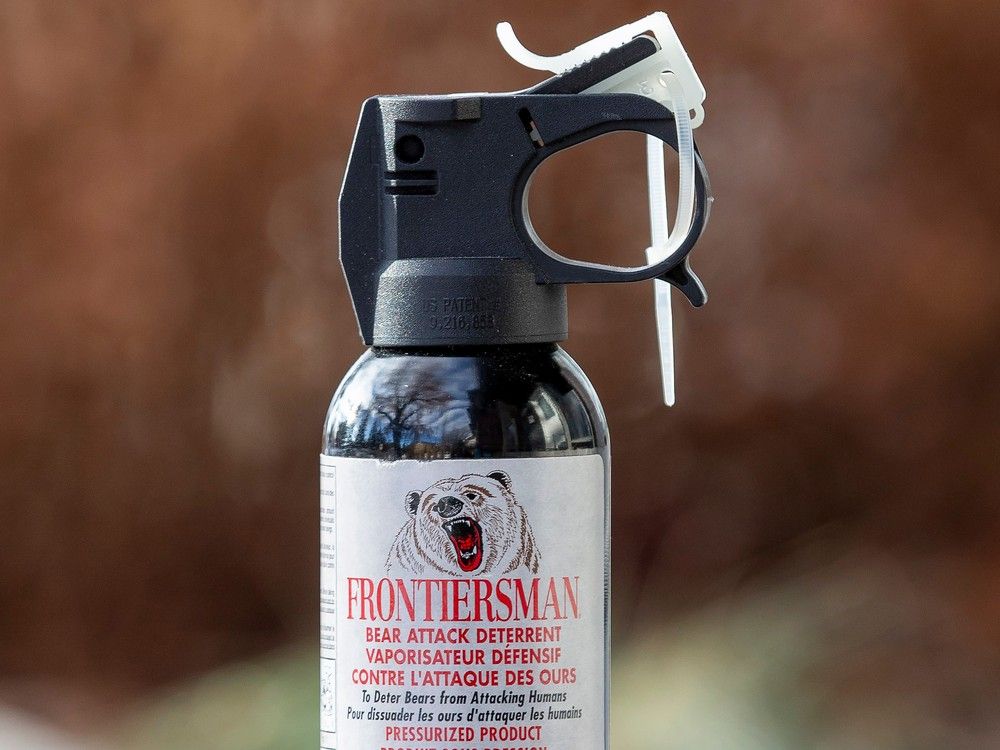Community Safety Initiatives: Partnering For Bear Spray Education

Table of Contents
The Critical Role of Bear Spray in Reducing Bear Encounters
Bear spray, a non-lethal deterrent, has proven remarkably effective in preventing bear attacks. Its potent, temporary incapacitant significantly reduces the likelihood of an aggressive encounter. Unlike other deterrent methods such as noisemakers, which are often unreliable, bear spray directly impacts a bear's senses. The capsaicinoids in bear spray disrupt a bear's olfactory system, causing intense discomfort and prompting immediate retreat.
- Statistics: Studies show bear spray is effective in upwards of 90% of cases where it's properly deployed, significantly reducing the severity of bear encounters and preventing attacks.
- Comparison to Other Methods: While noisemakers and other deterrents can be helpful in some situations, they are far less reliable than bear spray in deterring an aggressive bear. Bear spray provides a more immediate and impactful response.
- How Bear Spray Works: The active ingredient, capsaicin, irritates the bear's eyes, nose, and mouth, causing intense burning and discomfort, forcing it to break off the encounter.
Responsible bear spray use and storage are paramount. Always carry your bear spray readily accessible, understand its proper deployment technique (a short burst is often sufficient), and store it in a cool, dry place away from direct sunlight and extreme temperatures.
Building Effective Partnerships for Bear Spray Education
Successful bear spray education programs require a collaborative effort involving diverse stakeholders. A multi-pronged approach ensures maximum reach and impact within the community.
- Government Agencies: Wildlife departments and park services play a crucial role in funding, providing scientific data, and developing educational materials.
- Outdoor Recreation Organizations: Hiking clubs, hunting associations, and other outdoor groups can integrate bear spray education into their existing programs and training sessions.
- Schools and Educational Institutions: Integrating bear safety and bear spray education into school curricula can reach younger generations and instill safe practices early on.
- Local Businesses: Outfitters, tourism operators, and other businesses interacting with wilderness areas can incorporate bear spray education into their services and promote responsible practices.
- Community Leaders and Volunteers: Local leaders and volunteers are critical in organizing community events, spreading awareness, and providing direct education to residents.
Each partner brings unique resources and expertise. For example, government agencies may provide funding and scientific expertise, while outdoor organizations can offer practical training and outreach to their members. This collaborative approach ensures a comprehensive and impactful program.
Developing Comprehensive Bear Spray Education Programs
A well-structured bear spray education program incorporates diverse methods to reach various demographics and ensure maximum impact.
- Targeted Outreach Campaigns: Tailor messaging and channels to reach specific groups, such as hikers, campers, families, and backcountry users.
- Interactive Workshops and Demonstrations: Hands-on training on bear spray deployment, proper storage, and safe handling is crucial for effective education.
- Educational Materials: Develop user-friendly brochures, posters, videos, and online resources to provide easily accessible information.
- Community Awareness Events: Organize presentations, booths at local fairs, and other events to reach a broad audience and promote bear safety.
- Program Evaluation and Adjustment: Regularly track program effectiveness and adjust strategies based on feedback and results to ensure optimal impact.
Addressing Common Misconceptions about Bear Spray
Addressing common misconceptions and concerns is vital to promoting effective bear spray education.
- Accidental Discharge: Bear spray is designed with safety features to minimize accidental discharge. Proper storage and handling significantly reduce this risk.
- Environmental Impact: The amount of capsaicin used in bear spray is relatively small, and its impact on the environment is negligible compared to the benefits of preventing bear attacks.
- Supplement to Other Safety Measures: Bear spray should be viewed as a supplement to other essential safety measures, such as food storage, proper waste disposal, and awareness of bear behavior and habitat.
Conclusion
Community-based bear spray education programs are essential for enhancing community safety and minimizing human-wildlife conflict. Successful programs rely on collaborative partnerships to ensure widespread reach and effective delivery of information. By fostering awareness and promoting responsible bear spray use, we can significantly reduce the risk of bear encounters and create safer communities for everyone.
We urge you to get involved in promoting bear spray education in your community. Contact your local wildlife agency, participate in workshops, or spread awareness through social media using #BearSprayEducation. Search for "bear spray education programs near me" to find local initiatives and learn more about responsible bear spray use. Become an advocate for community safety and help reduce human-wildlife conflict.

Featured Posts
-
 Israeli Embassy Confirms Identities Of Couple Killed In Dc Shooting
May 22, 2025
Israeli Embassy Confirms Identities Of Couple Killed In Dc Shooting
May 22, 2025 -
 Fortnite Returns To Us I Phones
May 22, 2025
Fortnite Returns To Us I Phones
May 22, 2025 -
 Andrew Forrests Pilbara Concerns Rio Tintos Response And The Future Of Mining
May 22, 2025
Andrew Forrests Pilbara Concerns Rio Tintos Response And The Future Of Mining
May 22, 2025 -
 Pronghorns Fight For Survival A New Documentary From The University Of Wyoming
May 22, 2025
Pronghorns Fight For Survival A New Documentary From The University Of Wyoming
May 22, 2025 -
 Original Sin Season 1 Finale A Deeper Look At Dexters Debra Mistake
May 22, 2025
Original Sin Season 1 Finale A Deeper Look At Dexters Debra Mistake
May 22, 2025
